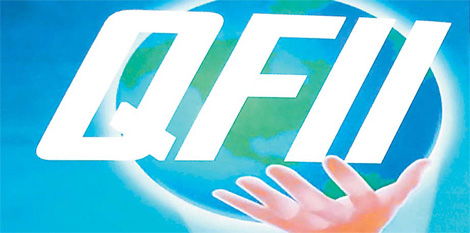Top Biz News
Foreign funds look east
By Karen Yip (China Daily)
Updated: 2009-12-15 08:08
 |
Large Medium Small |
|
By the end of August this year, the total net assets managed by QFIIs stood at $15.72 billion. [China Daily] |
Foreign funds are expected to take overweight positions in the local equities markets next year as the Chinese economy picks up steam and the government continues to encourage the entry of more players with a slew of favorable policies.
Analysts said they have already seen encouraging signals from the Chinese government after it decided to grant more licenses to foreign funds. "The Chinese government plans to attract more foreign funds. They are certainly loosening the ceiling for the amount permitted for investments by qualified foreign institutional investors (QFIIs)," said Hu Miao, a research analyst at Z-Ben Advisors in Shanghai.
The government has approved funds run by BNY Mellon Asset Management International Ltd, Manulife Asset Management (Hong Kong) Ltd and Nomura Asset Management Co to invest in stocks and bonds, the China Securities Regulatory Commission said in a statement posted on its website yesterday.
Foreign funds are projected to obtain an absolute minimum investment quota next year of $5 billion, up from this year's estimated $3.3 billion, Hu said. Foreign funds or QFIIs are currently the only vehicle for foreigners to invest in Chinese equities under the A share category.
"Expect growth in 2010 to surpass previous periods of QFII quota issuance," she said, adding that large-cap QFIIs would take noteworthy positions in sectors that would largely benefit from the government's stimulus package to boost domestic consumption.
China on Dec 9 said it would extend subsidies for purchases of appliances and farming equipment in rural areas. The government also plans to continue appliance trade-in subsidies beyond May 2010. An index tracking consumer discretionary stocks on the CSI 300 index has climbed 130 percent this year, the best performer among the 10 industry groups.
Xav Feng, head of research for China at Lipper, said property, energy, resources, and consumer-related equities would continue to be QFIIs' favorites due to increasing demand from businesses and end-users.
Out of the current 90 QFIIs, 28 are active investors in China, according to Lipper. When tracked against the year-to-date performance of the Shanghai A share index which stood at 75.13 percent as at the end of November, the QFIIs registered a slightly outperformed rate of 77.14 percent.
| ||||
The largest QFII in terms of total net assets managed, iShares FTSE/Xinhua 25, recorded a total yield of 76.05 percent as at the end of November, Feng said.
Australia-based AMP Capital China Group Fund, which is one of the largest, active QFIIs, holds stock positions in property giant China Vanke, Gree Electric Appliances, Shandong Gold Mining, CITIC Securities and Industrial and Commercial Bank of China as of Nov 30, according to its quarterly report. Financials, industrials, materials, consumer staples, and consumer discretionary sectors top the fund's weightage.
"Figuratively speaking, the Chinese market has already rebounded 70 percent this year," Feng said. "There is more room for the market to expand. China is certainly an important emerging market that you cannot ignore. The QFII business will prosper in 2010."
"The Chinese government is serious about economic growth and they would certainly keep an eye on inflation or cap a potential bubble burst," he added. "The BRIC economies are now back to their previous positions - the Indian, Russian and Brazilian markets have rebounded. China can still outperform other countries."
China is expected to meet its GDP projection of 8 percent this year, Feng reckoned. Next year's GDP projection for the country is between 8.5 percent and 9 percent.?














